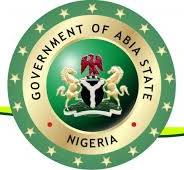Nigeria’s Port Modernisation: From Lekki’s Lesson to Eastern Ports’ Growth
Nigeria’s maritime future is being reshaped. While attention has often been fixed on the movement of goods through Lagos’ Apapa quays, new momentum is building to modernise the eastern ports in Onne, Calabar, and Rivers. The vision: a balanced, regionally integrated port network that’s faster, safer, and more digitally driven. At the heart of this transformation is a clear playbook borrowed from the Lekki Deep Seaport—one that pairs smart policy, strong partnerships, and technology to unlock real economic potential.
- The Lekki playbook: why it matters for all Nigerian ports
- Capacity and efficiency: Lekki Deep Seaport can handle up to 1.2 million TEUs and welcomes large vessels, unlocking capacity for Nigeria’s growing trade. This demonstrates what modern infrastructure, supported by integrated transport links, can achieve.
- Five pillars of success:
- Strategic location
- Public–private partnership (PPP) model
- Integrated transport links
- Supportive policies
- Technology-driven operations
- National ambitions: The government views Lekki as a model to replicate nationwide, aiming to transform Nigeria’s port system into a network of modern, globally competitive gateways.
- Eastern ports: goals and immediate steps
- Upgrading Eastern Ports: The Federal Government plans to modernise Eastern ports in Onne, Calabar, and Rivers, mirroring Lekki’s success story. The aim is to promote balanced regional growth and reduce bottlenecks that have historically constrained shipping and logistics in the east.
- Digital transformation: A central component is the Port Community System integrated with the National Single Window. This will create a paperless, transparent, and secure digital environment for maritime stakeholders, speeding clearance times and improving data sharing.
- Policy consistency and investment: The administration emphasises the need for stable policies, sustained infrastructure investment, targeted capacity building, and accelerated digital transformation. Enduring private-sector partnerships are viewed as essential for scaling success.
- What makes the Lekki model work—and how it translates to the region
- PPP as a driver: Lekki’s success rests on a robust public–private partnership framework that mobilises private capital, expertise, and operational efficiency while ensuring public oversight.
- End-to-end efficiency: Beyond the port gates, the integrated transport links—from roads to rail to inland corridors—reduce dwell times, lower costs, and attract more cargo, including transhipment for landlocked neighbours.
- Local capacity and national ambition: A strong national shipping fleet, anchored by disbursement of the Cabotage Vessel Financing Fund (CVFF) to qualified Nigerian shipowners, supports domestic capacity building and a path to a potential National Flag Carrier.
- The current landscape: opportunities and early wins
- Bottlenecks easing: Recent improvements include critical access road completions that have freed ports from long-standing logistical bottlenecks, enabling faster cargo movement and renewed investor confidence.
- Underutilised capacity: Even with expansion, some ports operate well below potential (for example, Lekki reportedly operating at around 20% capacity before optimisation). The challenge is to translate learnings into expanded throughput across Nigeria’s network.
- Regional impact: A modernised eastern port system would not only boost trade in that region but strengthen West Africa’s maritime position by providing reliable gateways for intra-African trade and regional supply chains.
- What to watch in the coming months
- Policy continuity: Expect continued emphasis on stable, business-friendly policies that incentivise investment in port infrastructure and related logistics.
- Digital rollout: The Port Community System and National Single Window rollout will be a critical test of Nigeria’s ability to digitise its maritime operations end-to-end.
- Project milestones: Watch for milestones on road and rail linkups to eastern ports, CVFF disbursement to Nigerian shipowners, and progress in achieving 24-hour vessel transit times similar to improvements seen at Lekki.



